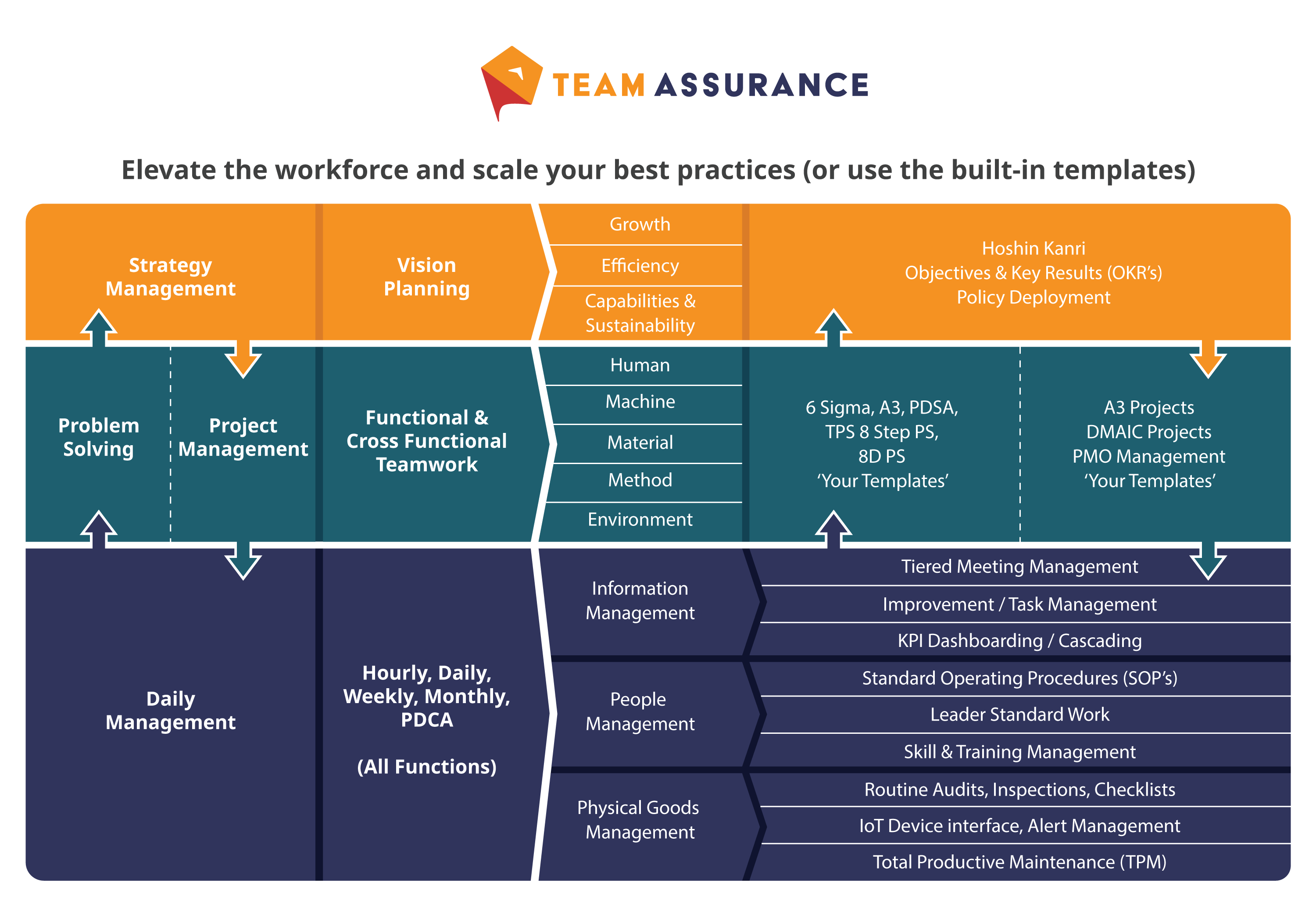Implementing standards doesn’t mean eliminating agency or ownership of tasks from your staff. We discuss how laying a foundation of standards strengthens your continuous improvement efforts.
Are your people crystal clear on the standards or are they struggling in the chaos?
Having clarity and standards in our environment is the only way to maintain stability and move toward our performance objectives effectively. Standardisation can get a bad rap – people feel that standards are rigid. They may feel constrained by them and see them as a tool to micro-manage; eliminating any ownership, individual flair or creativity. Often standards can be pushed down or forced upon people and processes without consultation or input.
This can alienate the stakeholders, robbing them of agency and ownership – leading to resentment and agitation. We need not look any further than the global COVID situation. In my experience standards, when applied in the right way, have the opposite effect.
Standards provide freedom within a framework
Standards should set people free and should help people to complete a task in the best way possible. The easiest way, the way that produces the best quality, safely, and in a way that can be applied consistently and repeatably. The cumulative effect of this is that the process flow is optimised and the product or service in question is delivered efficiently on time – every time.
A standardised approach should provide a feeling of safety and security for everyone concerned.
As customers, what do we want? We want consistency; we want to know that the product or service we purchase lives up to our expectations every time. This experience is no different for an internal customer as it is for an external customer. The only way to guarantee that expectations are met is to standardise the process. Every high performing organisation builds their reputation on its standards. This can apply to the mechanics of the process itself, the accountable standards and expectations of performance, the cultural markers, and company-wide standards of behaviour.
When we look at our own processes how often do we see variation occur? How often do we see a result we did not anticipate due to a lack of standardisation, absence of clear standards ,or the adherence to standards. These deviations may be minor or they may be significant. They may happen randomly once in a while or consistently every day. Ultimately any variation, and the cumulative effect of multiple occurrences of variation, cause significant problems for our process internally. They lead to waste and frustration, inevitably impacting our customers’ experience at some point.
Think about your process as a whole. Think about the number of steps in producing your goods or delivering your service. There are perhaps tens of discreet steps involved in moving the unit of work from the receipt of an order to the point of delivery. If one of these process steps is unpredictable and/or producing inconsistent or random deviations think of the impact of every single step potentially having some degree of variation. How do we control this situation?
Standards start by breaking down your process
The first step is to clarify and define the process standards at each step from beginning to end. Understand how the task is to be conducted by literally stepping through the process in sequence and documenting each component part. The key, as always, from a Lean viewpoint is to go to Gemba.
When defining your standards you must firstly engage with the place where the work happens. Engage with the people who do the work – the subject matter experts on the front line. Of course, the customers requirements and specifications, as well as the nature of the process, will guide the composition of the standard. All too often standards are composed from a purely technical or compliance viewpoint neglecting the critical stakeholder group – the people who actually do the job.
Once a standard is documented we must ensure we test and verify the standard. It must produce the outcome within the specified parameters consistently. It should also be clear and user-friendly. It’s important that the standards are highly visual and that they are accessible at the place where the work happens. People should have intimate knowledge of the standard – after all, it serves as a continual point of reference. It should be the tool that facilitates effective training and knowledge transfer for people learning from scratch or refreshing their current skills.
Standards not perfection
Another factor to bear in mind is that when we say ‘process standard’ we do not mean ‘perfection’. Again, depending on the nature of the process and the requirements of the customer – every process will have natural variation. Our job is to be clear on what the acceptable amount of variation is and to maintain the variation within those control limits. The acceptable process tolerance and variation when producing components for NASA or medical products and the acceptable variation for producing timber pallets will be two very different things.
This highlights the need to consistently measure and control the outputs of the process and to verify the process performance at critical points on an ongoing basis. Tools like Process Behaviour and Control Charts come into play. They allow us to visualise how the process is performing against set upper and lower control limits. This can happen in real time as well as be regularly reviewed through a Daily Visual Management process.
Process standards should also be audited and formally reviewed routinely to ensure that what we expect to be happening is actually happening and that improvement opportunities are captured and actioned.
The point is that without repeatable standards we will struggle to:
- Be consistent or calm and be stuck in a world of waste and firefighting.
- Expose variation and see the problems.
- Learn and improve through problem solving and iterative improvement.
- Find the single best way.
- Communicate with our people and effectively train.
- Focus on the process and not be stuck blaming people.
- Keep our customers happy!
So, go forth and set those standards!
Consider the greater C.I. framework when setting your standardised processes
Lean tools like standardised problem solving techniques, Standard Operating Procedures (SOPs), and a Tiered Daily Management process that supports the entire PDCA loop are key to achieving continuous improvement success. However, organisations should ensure that standards and processes are developed together, not in isolation. Without considering all adjacent processes we can end up with misalignment of people, information silos, and sub-optimal procedures.
The illustration below demonstrates how we designed the interconnected TeamAssurance platform to avoid locally optimised, disconnected ‘Point Solutions’ (digital or analog) that do not help, and may even hinder the progress toward your goals.

If you’re a business in need (or a consultant with clients in need) and you’d like to explore the opportunities that digital-aids to Lean tools provide contact us for a demonstration of the TeamAssurance platform today.





